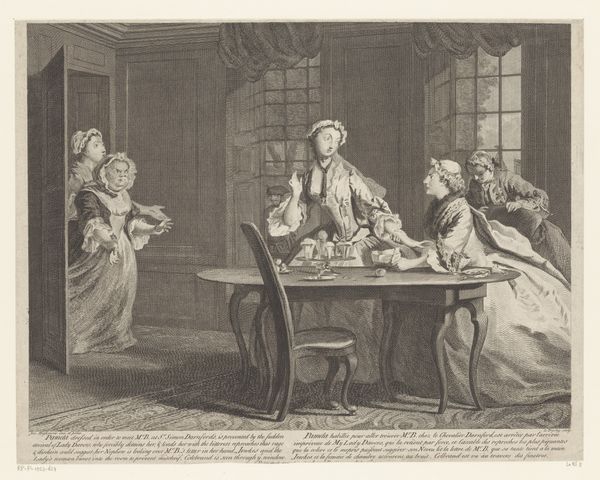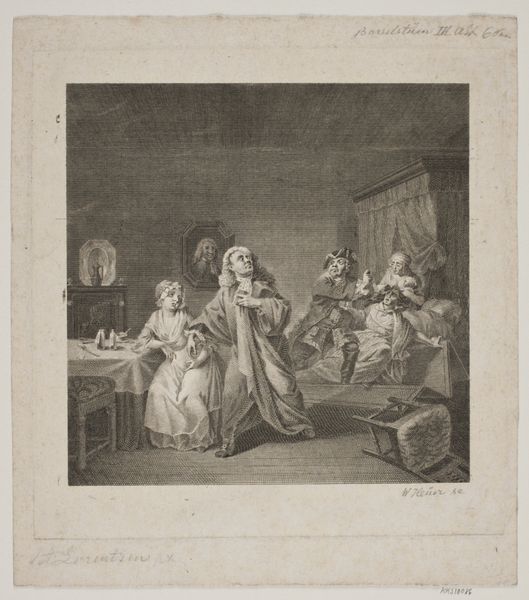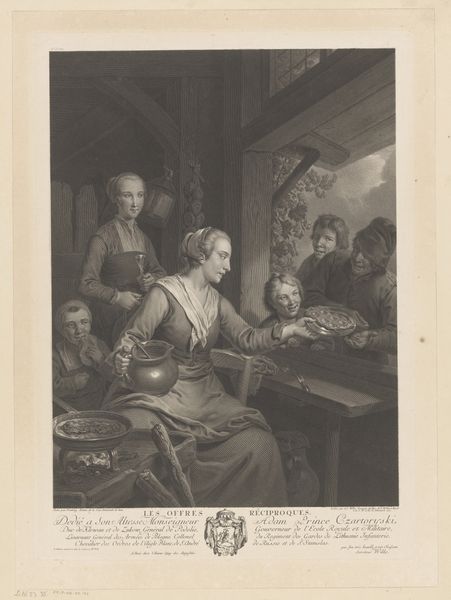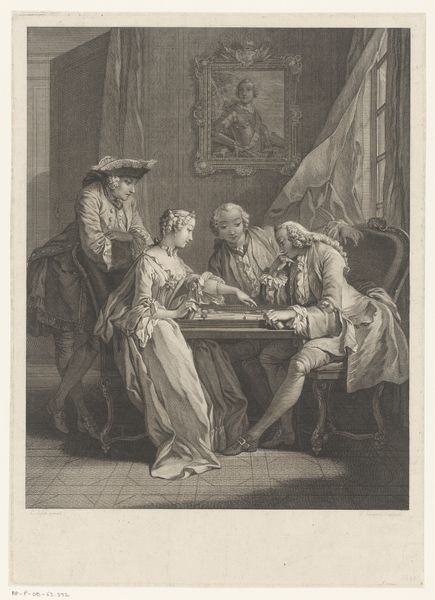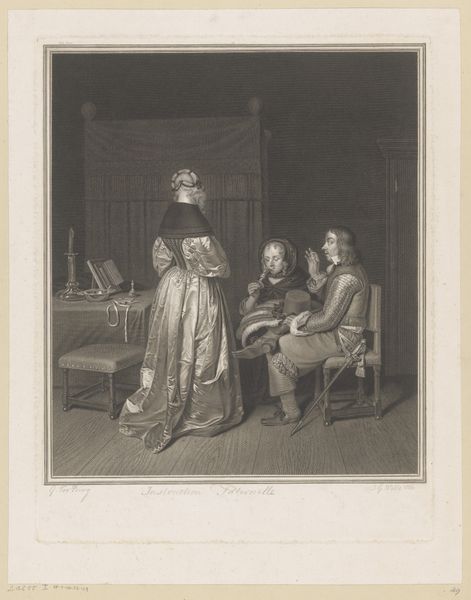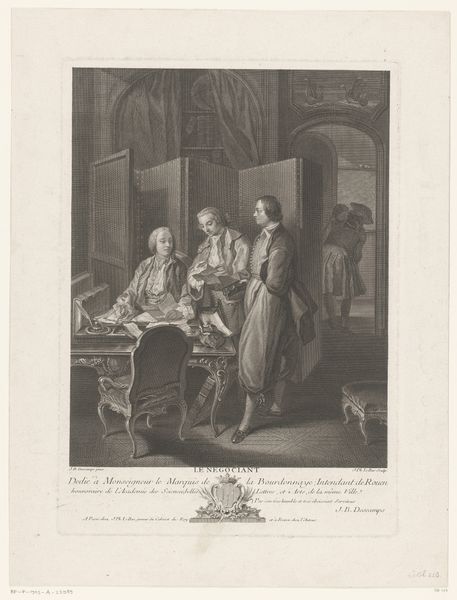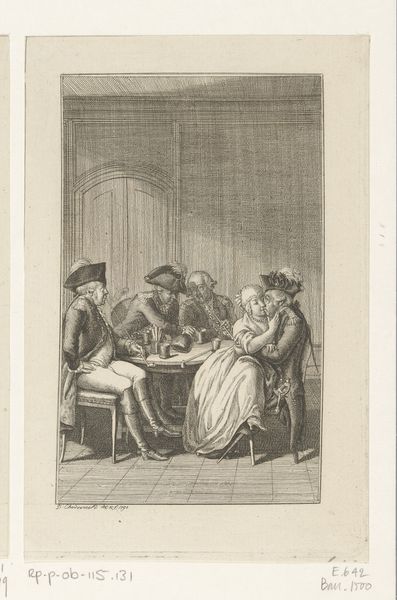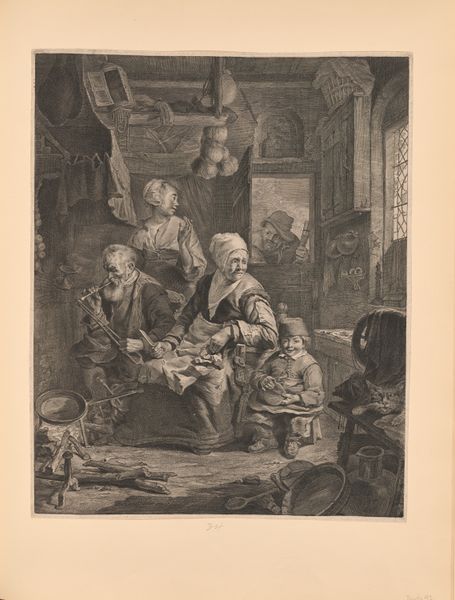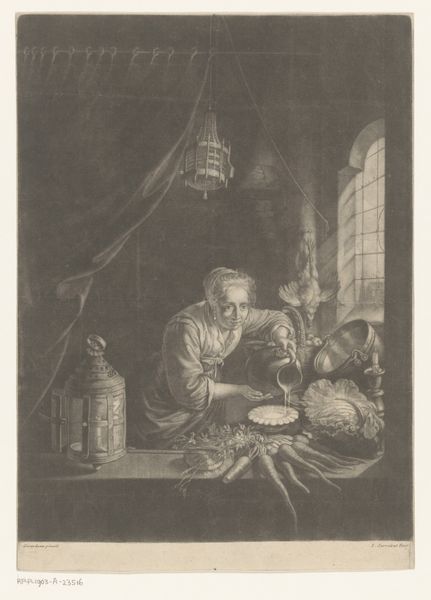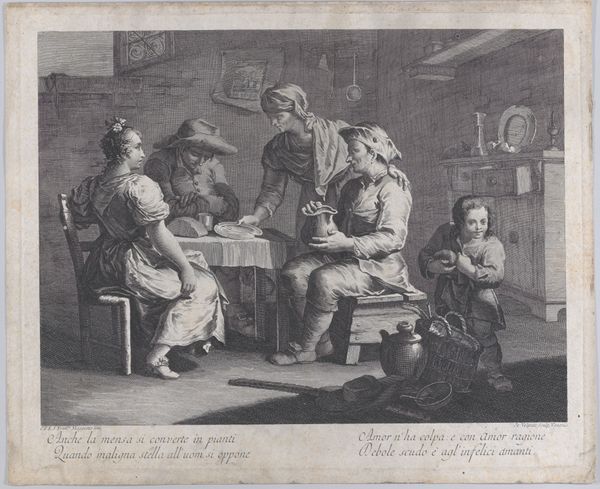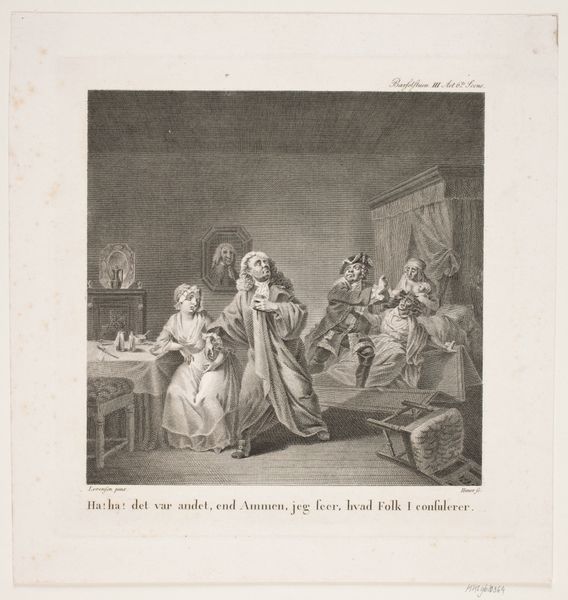
etching
#
narrative-art
#
baroque
#
etching
#
genre-painting
Dimensions: height 393 mm, width 275 mm
Copyright: Rijks Museum: Open Domain
Editor: This etching, titled "Interieur met dinerend gezin," or "Interior with Dining Family," is from sometime between 1717 and 1783, and is attributed to Jacques Philippe Le Bas. It depicts a family gathered for a meal. The scene feels incredibly staged and almost too perfect. How do you interpret this work, especially given the social context of its time? Curator: It's fascinating, isn't it? On the surface, we see a harmonious domestic scene, seemingly innocent. But, if we consider the period's rigid social hierarchies and expectations, it provokes questions about the constructed nature of this family portrait. Editor: Constructed? In what way? Curator: Well, consider who gets represented in art and how. The burgeoning middle class often used these types of images to project an image of prosperity and moral uprightness, reinforcing certain bourgeois values. Family meals, depicted as harmonious events, obscure the real power dynamics within households— the labour of servants, the restricted roles of women, and the disciplining of children. What is present in the image versus what is left out becomes incredibly significant. Does it reveal how wealth shaped family and personal relationships? Editor: So, you are suggesting it is more about presenting an idea rather than reflecting reality? Curator: Precisely. What this scene silences becomes as crucial as what it chooses to show. Images of family, especially during the Enlightenment, became a powerful way to reinforce social norms and class identity. Do you notice any signs of resistance? How do you think social context informed the meaning and creation of this work? Editor: I hadn't thought about it that way. It really shifts my understanding. Thank you. Curator: It encourages us to critically question those presented ideals. Art like this challenges us to look beyond the surface and confront complex historical power dynamics.
Comments
No comments
Be the first to comment and join the conversation on the ultimate creative platform.

